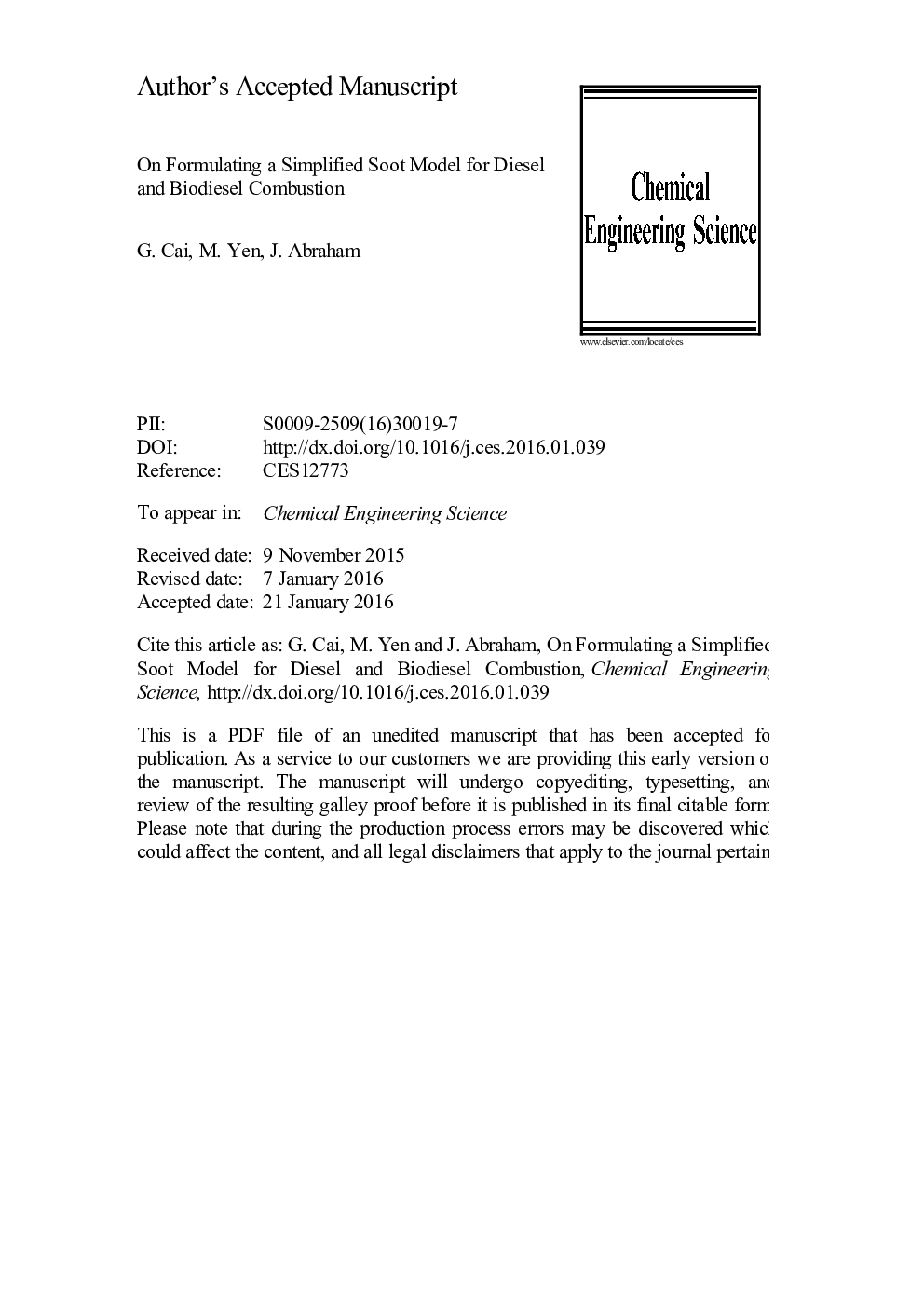| Article ID | Journal | Published Year | Pages | File Type |
|---|---|---|---|---|
| 6589293 | Chemical Engineering Science | 2016 | 31 Pages |
Abstract
In this study, a semi-empirical two-equation soot model that can predict soot in petrodiesel and biodiesel sprays and quantitative differences between soot volume fractions in the two sprays under engine conditions is developed. n-Heptane is used as the surrogate for petrodiesel and a ternary mixture of methyl decanoate, methyl-9-decanoate, and n-heptane as the surrogate for biodiesel. The n-heptane simulations are conducted using a 160-species mechanism. In the case of the ternary biodiesel surrogate, a 115-species reduced mechanism is employed to model the chemical kinetics. The semi-empirical soot model includes soot inception, surface growth, coagulation, and also oxidation. The results from the semi-empirical model will be compared to those obtained from a detailed soot kinetics model in one-dimensional diffusion flame studies. Analysis of the results shows that the model developed in this work can predict soot formation at various conditions for both petrodiesel and biodiesel fuels reasonably well, and at a fraction of the computational cost of the detailed soot kinetics mechanism.
Related Topics
Physical Sciences and Engineering
Chemical Engineering
Chemical Engineering (General)
Authors
Gary Cai, May Yen, John Abraham,
